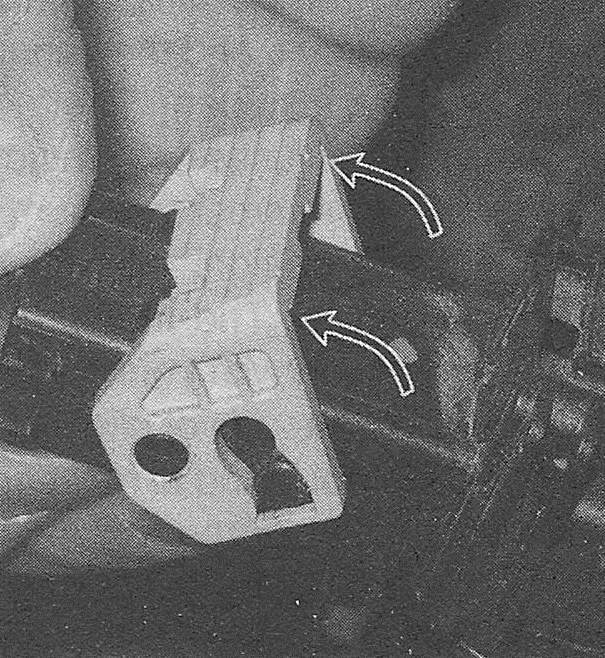Electrical connectors — general information
1. Most electrical connection on these vehicles are made with multiwire plastic connectors. The mating halves of many connectors are secured with locking clips molded into the plastic connector shells. The mating halves of some large connectors, such as some of those under the instrument panel, are held together by a bolt through the center of the connector.
2. To separate a connector with locking clips, use a small screwdriver to pry the clips apart carefully, then separate the connectar halves. Pull only on the shell, never pull on the wiring harness as you may damage the individual wires and terminals inside the connectors. Look at the connector closely before trying to separate the halves. Often the locking clips are engaged in a way that is not immediately clear. Additionally, many connectors have more than one set of clips.
3. Each pair of connector terminals has a male half and a female half. When you look at the end view of a connector in a diagram, be sure to understand whether the view shows the harness side or the component side of the connector. Connector halves are mirror images of each other, and a terminal shown on the right-side end-view of one half will be on the left side end-view of the other half.
4. It is often necessary to take circuit voltage measurements with a connector connected. Whenever possible, carefully insert a small straight pin (not your meter probe) into the rear of the connector shell to contact the terminal inside, then clip your meter led to the pin. This kind of connection is called «back-probing.» When inserting a test probe into a terminal, be careful not to distort the terminal opening. Doing so can lead to a poor connection and corrosion at that terminal later. Using the small straight pin instead of a meter probe results in less chance of deforming the terminal connector.
Most electrical connectors have a single release tab that you depress to release the connector
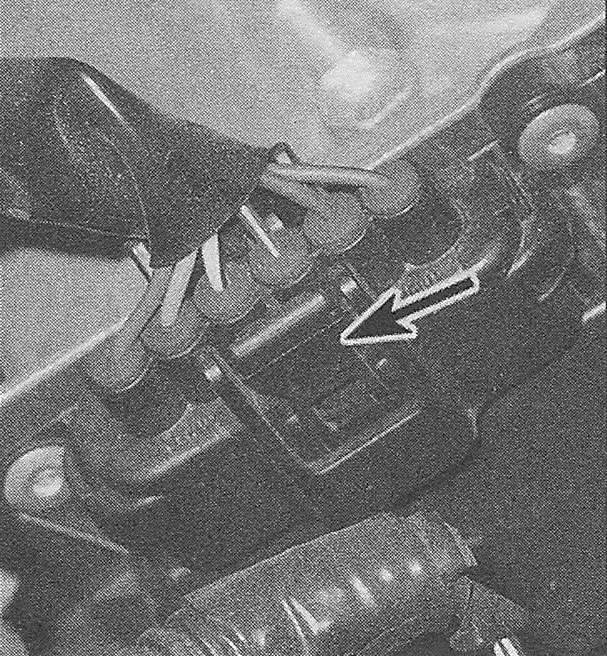
Some electrical connectors have a retaining tab which must be pried up to free the connector
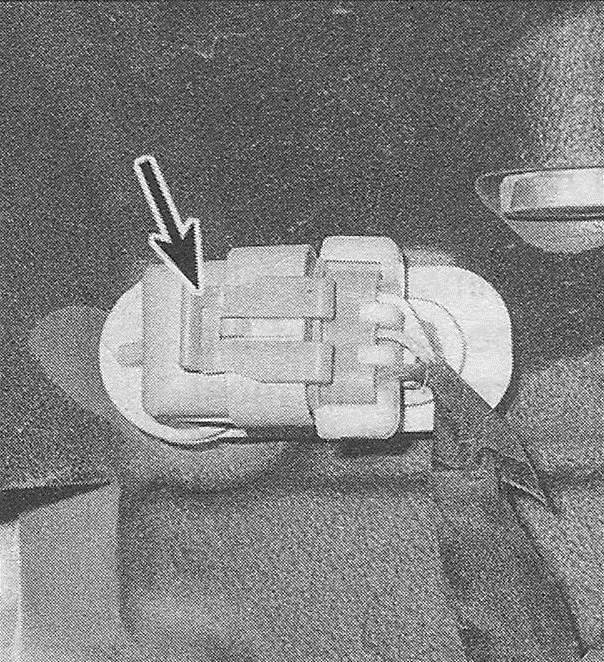
Some connectors have two release tabs that you must squeeze to release the connector
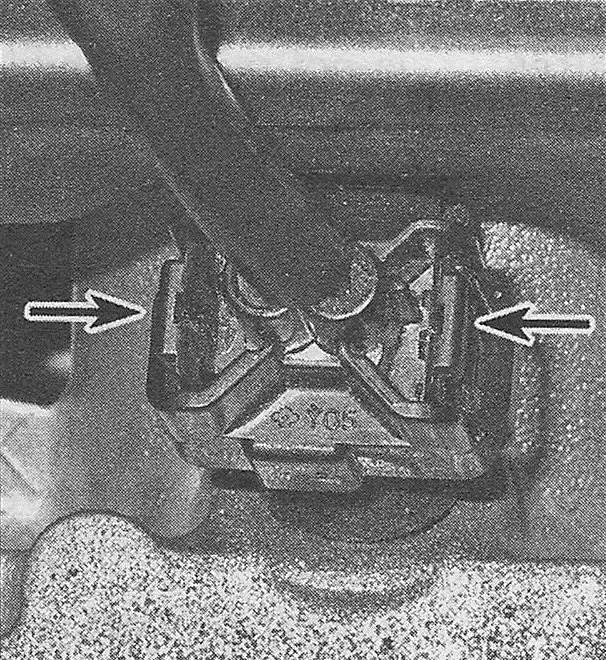
Some connectors use wire retainers that you squeeze to release the connector
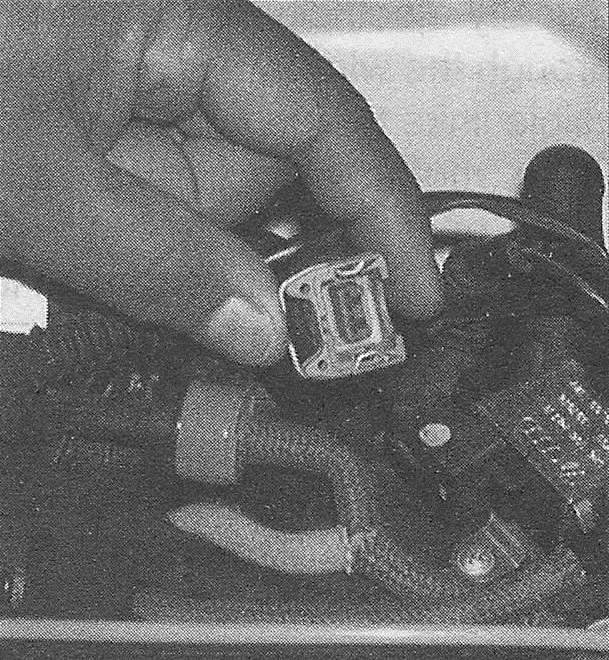
Critical connectors often employ a sliding lock (1) that you must pull out before you can depress the release tab (2)
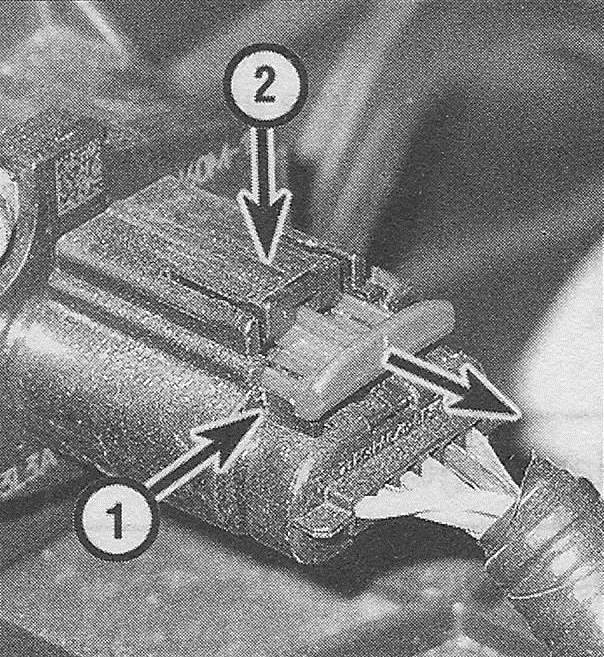
Here’s another sliding-lock style connector, with the lock (1) and the release tab (2) on the side of the connector
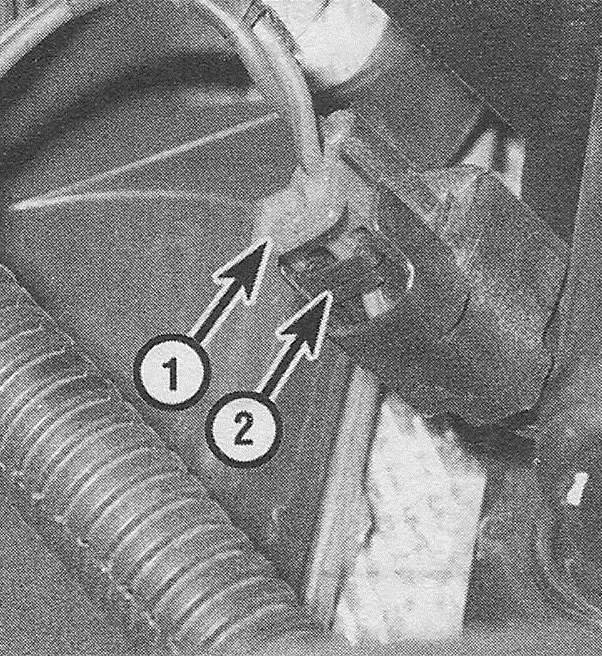
On some connectors the lock (1) must be pulled out to the side and removed before you can lift the release tab (2)
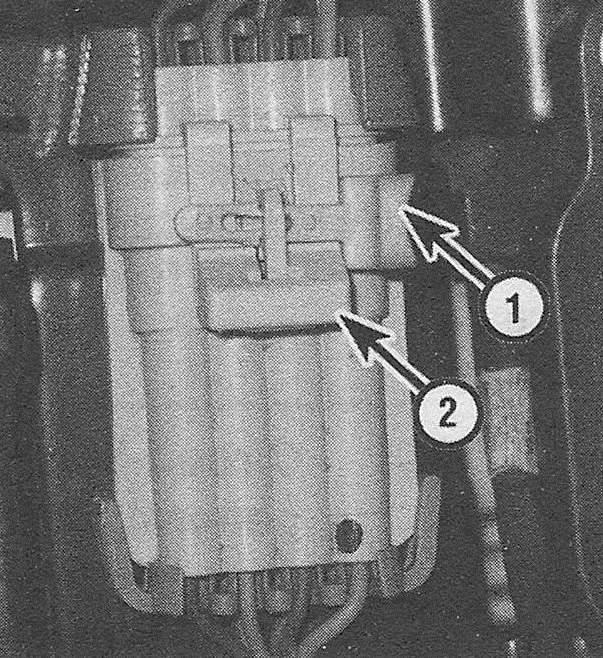
Some critical connectors, like the multi-pin connectors at the Powertrain Control Module employ pivoting locks that must be flipped open
